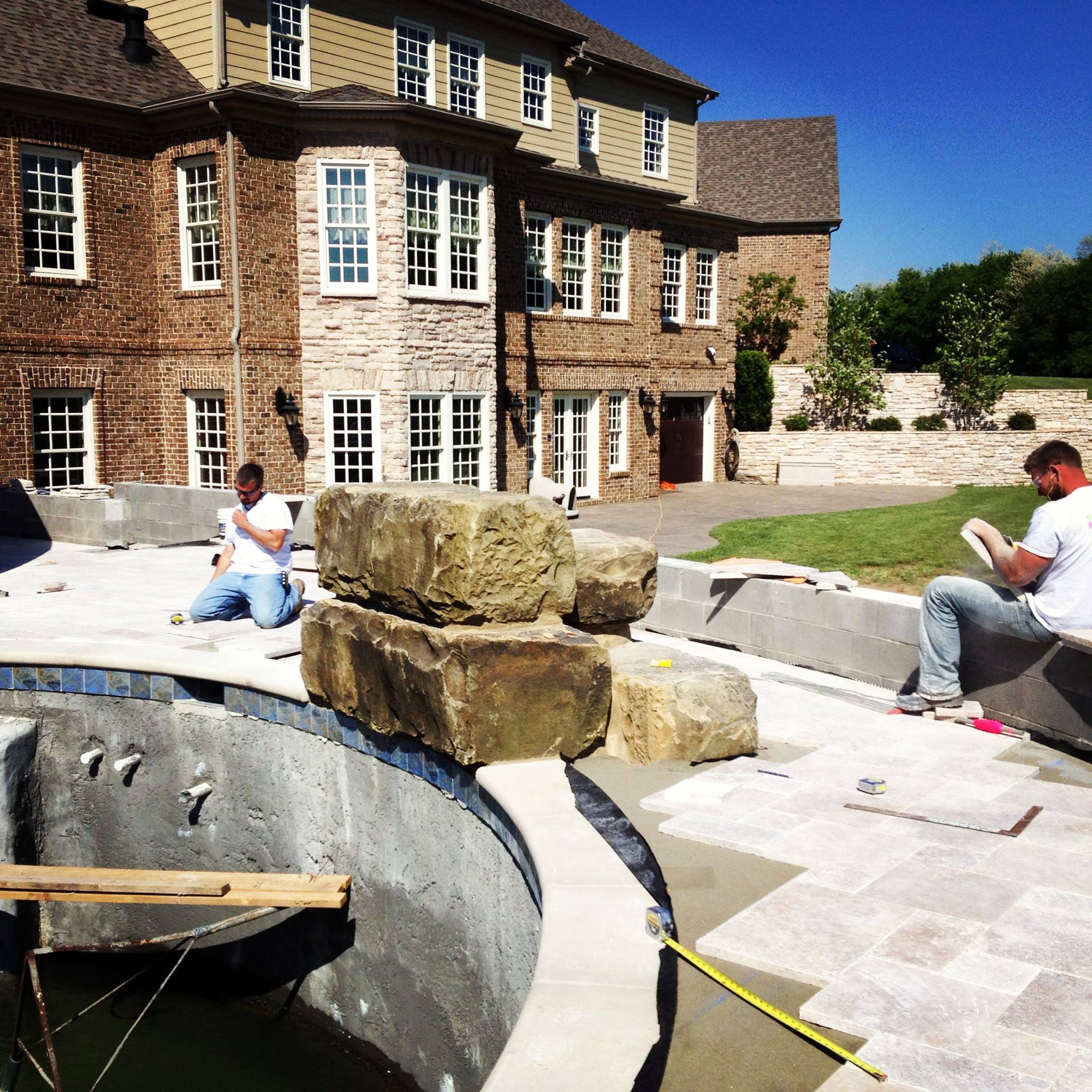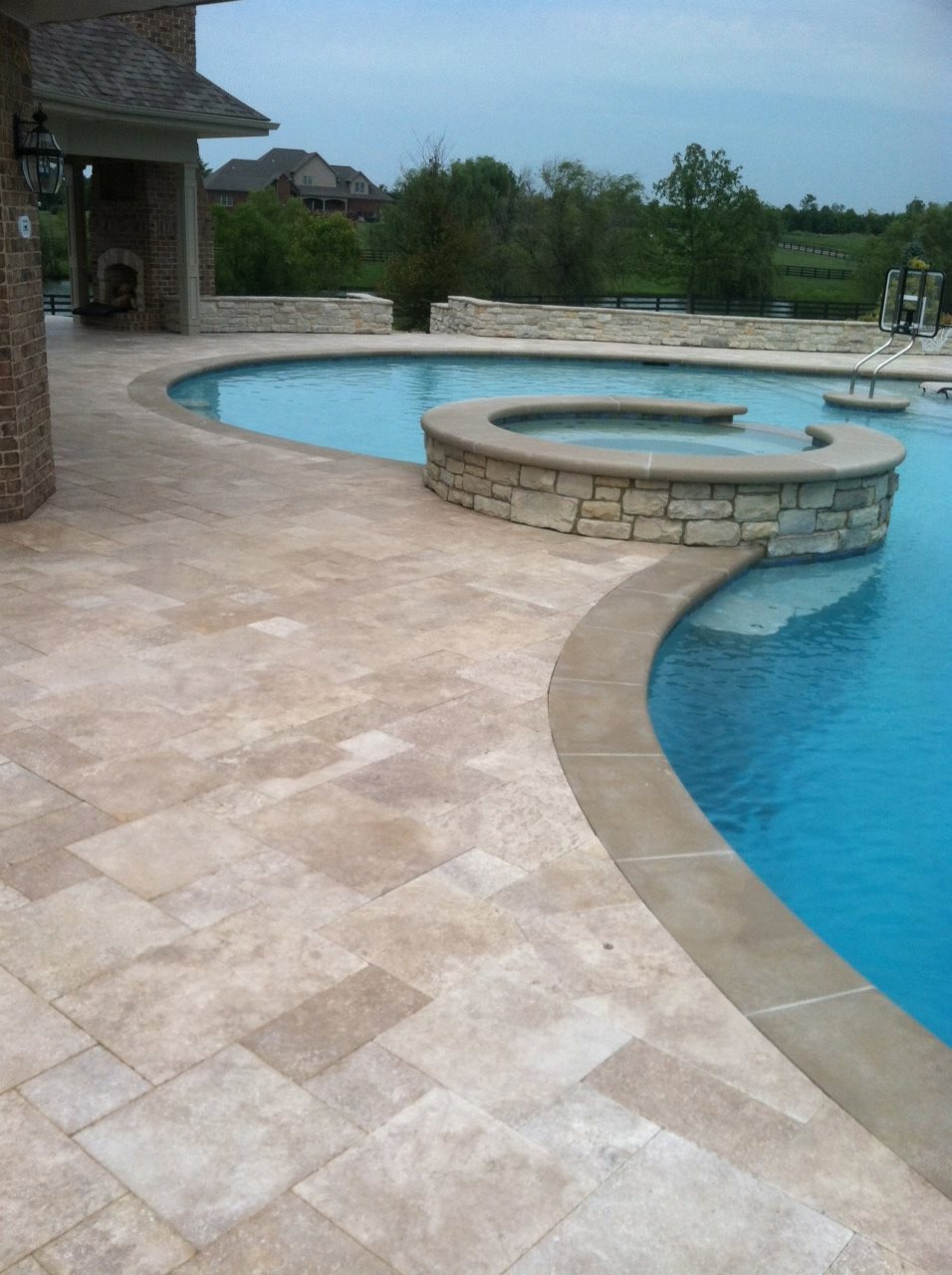How to install travertine pavers
We receive calls on a regular basis asking how to install travertine pavers. There is a lot of controversy floating around the internet about how travertine pavers should be installed in cold climates. Through lot’s of trial and error, we’ve come up with an installation system that has held up great.
Travertine Paver Installation Problems
When we first began installing travertine, we tried to use the same techniques we used to install pavers – gravel base with a sand setting bed. Although this worked ok, we found that over time the sand bed would work its way back up the joints, and although it was in small amounts, it was enough to cause unevenness between each paver. You see, travertine pavers are laid very close together and because they’re so smooth on top, you see every height difference between one paver to the next.
We also noticed that minor heaves in the base would cause unevenness between the pavers over time as well.
There are also some other problems that go along with installing travertine using this method, but I won’t get into them as they only apply to certain types of installations.
The Solution
- Every travertine installation we install is over top of a concrete slab, reinforced at least 4″ thick with 6″ of compacted aggregate base beneath of it.
- Although we still use sand for the setting bed, we mix the sand dry with portland cement before screeding it out. We screed the sand and portland mix dry (no water added). We install the travertine on this dry setting bed, keeping it dry until we’re able to cut in all the edge pieces and compact.
- We also use a non-woven geotextile filter fabric below the sand bed, but on top of the concrete. This will prevent any of the sand setting bed from sifting through future cracks in the concrete.

We’ve found this installation procedure works great, hardens everything up while remaining flexible (we mix a low ratio of portland to sand so that it’s just enough to harden while still remaining flexible) and keeps the stones even through our cold winters here in Ohio.

Additional Tips
Trust me when I say, the quality of the travertine has a lot to do with the look of the finished product. We used to have clients who would supply the travertine and we would install it – we cut that out real quick. They would purchase the travertine pavers through online suppliers to save money. There would be pieces with holes all the way through the travertine and way more holes than there should be. Holes in travertine are natural, however, in order for travertine to hold up especially in cold climates it must be very dense. The holes are the easiest way to tell how dense travertine is. If there are holes that go through the entire stone, or if there are large holes, or if there are excessive amounts of holes chances are that piece of travertine is not very dense. In the winter, water will freeze inside of the travertine and break if the travertine is not dense enough.
If you’re located in Ohio, or within a 100 mile radius of Cincinnati, Ohio, we would be happy to install your travertine paver pool deck or patio, just click here to contact us.
If you’re not located in Ohio or within a 100 mile radius of Cincinnati, we would be happy to put you in contact with our travertine supplier.
Travertine Installation Guide
We’ve also put together an installation guide on how to install travertine pavers, especially in cold climates. Our process was developed in the cold climate of Ohio and we have installations that have been installed for 5 years and look just as good today as they did when we installed them. If you’ve fallen in love with travertine pavers, you’ve probably found that its difficult to find an installer who has any substantial experience installing travertine pavers. Once you have our installation guide, you can share it with a paver installer in your area and they will be able to use their existing skill set with our procedures to install travertine pavers in a way that will last.
If you would like to purchase our guide, simply click the Buy Now button below to pay with a credit card – the cost is $25. The instructions will be delivered to you within a couple hours via email.

